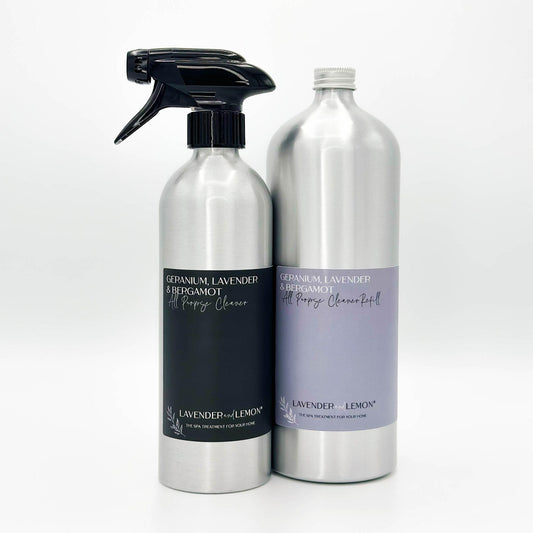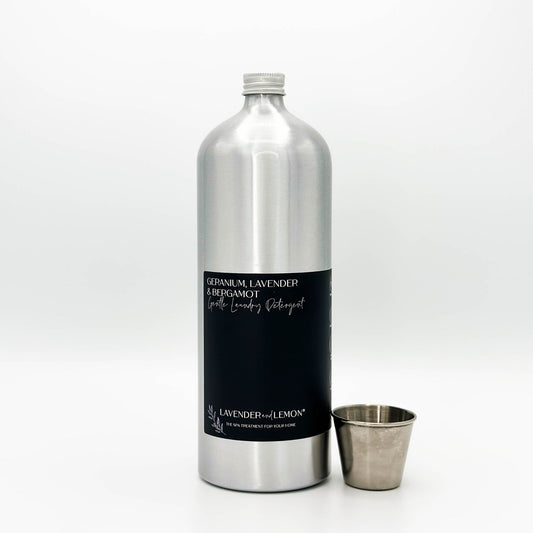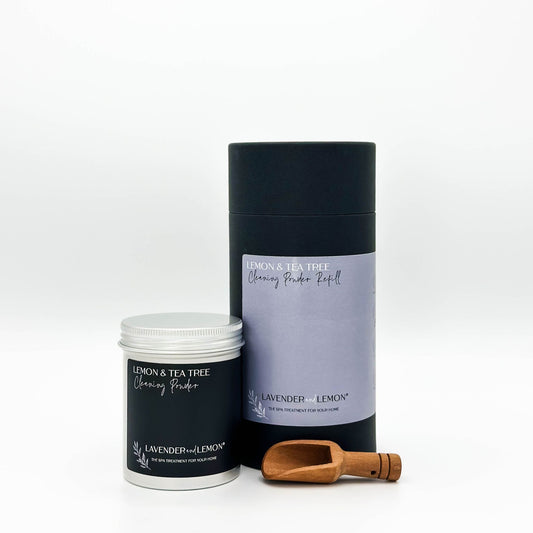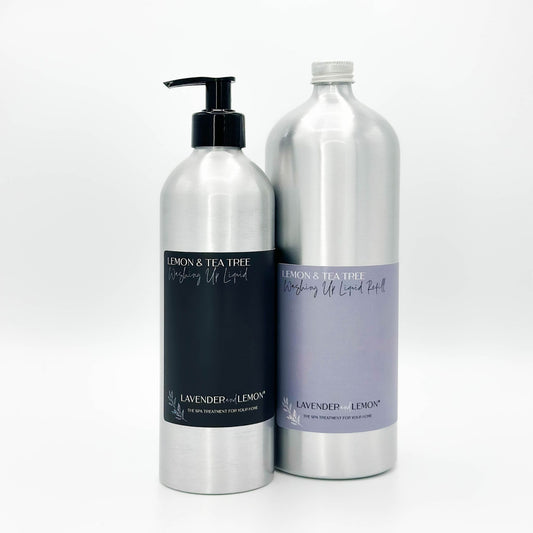Free Shipping Over £35
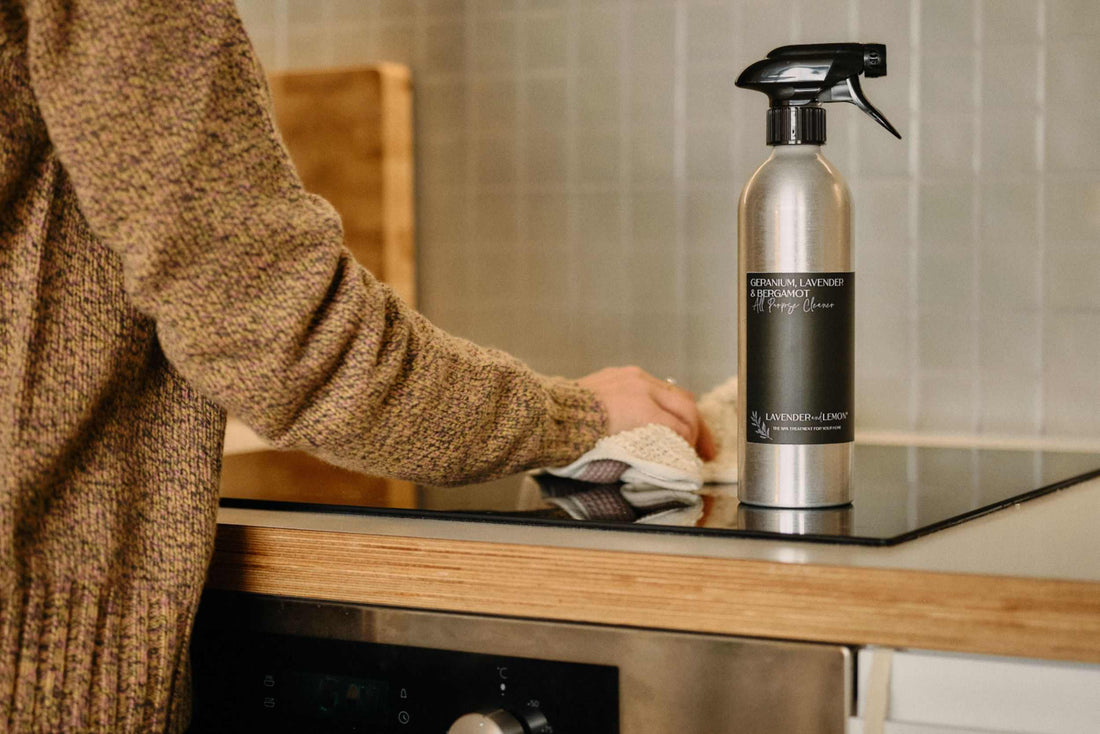
10 Essential Tips for Keeping Your Surfaces Sparkling Clean Using the Best Surface Cleaner
Share
Are you tired of trying different surface cleaners and still not getting the sparkling clean you desire? Look no further! In this article, I’ll share 10 essential tips for keeping your surfaces sparkling clean using the best surface cleaner, All Purpose Cleaner.
Maintaining a clean and hygienic home or workspace is essential for a healthy environment. From countertops to windows, surfaces can easily accumulate dirt, grime, and bacteria. But with the right surface cleaner and effective cleaning techniques, you can achieve the desired cleanliness.
This article will cover everything from choosing the right surface cleaner for specific materials to the importance of proper application and cleaning tools. I’ll also explore some lesser-known cleaning hacks that will help you tackle tough stains and ensure a sparkling finish every time.
Not only will these tips save you time and effort, but they will also leave your surfaces gleaming and germ-free. So, say goodbye to mediocre cleaning results and hello to a spotless space. Get ready to discover the secrets to maintaining sparkling clean surfaces with the best surface cleaner on the market.
Understanding Surface Cleaners and Their Benefits
Surface cleaners are specially formulated products designed to remove dirt, grime, and stains from various surfaces. They come in different forms, such as sprays, wipes, or concentrated solutions.
One of the key benefits of using a surface cleaner is that it saves you time and effort. These cleaners are specifically designed to cut through grease, remove tough stains, and leave surfaces sparkling clean. They often contain ingredients that help break down dirt and grime, making it easier to wipe them away.
Some surface cleaners have antibacterial properties that eliminate germs although you don’t actually need an antibacterial surface cleaner for everyday cleaning around your home.
Using a surface cleaner also helps protect the longevity of your surfaces. Regular cleaning with a suitable surface cleaner can prevent the build-up of dirt and grime, which can cause surfaces to deteriorate over time. By keeping your surfaces clean, you can extend their lifespan and maintain their original appearance.
In summary, surface cleaners offer targeted cleaning solutions, save time and effort, disinfect surfaces, and help protect the longevity of your surfaces. Now that we understand their benefits, let's move on to the next section and learn how to choose the best surface cleaner for different surfaces.
Choosing the Best Surface Cleaner for Different Surfaces
Not all surfaces are created equal, and using the wrong surface cleaner can lead to damage or ineffective cleaning. To keep your surfaces sparkling clean, it's crucial to choose the right cleaner for the specific material you are cleaning. Here are some tips to help you make the right choice:
- Read the labels: Surface cleaners often provide information about the materials they are suitable for. Look for labels that indicate compatibility with the surface you intend to clean. If in doubt, opt for an all purpose cleaner that is safe for use on a wide range of surfaces.
- Consider the surface type: Different surfaces require different cleaning solutions. For example, glass surfaces may require a cleaner specifically formulated for streak-free results. On the other hand, surfaces like stainless steel or granite may need specialized cleaners to maintain their shine and prevent damage.
- Avoid abrasive cleaners: While abrasive cleaners may be effective for removing tough stains, they can also cause scratches or damage to delicate surfaces. Avoid using abrasive cleaners on surfaces like wood, plastic, or painted surfaces. Instead, opt for gentle cleaners that are suitable for these materials.
- Choose eco-friendly options: If you are conscious of the environment, consider using eco-friendly surface cleaners. These cleaners are formulated using natural ingredients and are free from harsh chemicals that can be harmful to both your health and the environment.
By considering these tips, you can choose the best surface cleaner for the specific surfaces in your home or workspace. Using the right cleaner will ensure effective cleaning without causing any damage.
Preparing Surfaces for Cleaning
Before you start using your surface cleaner, it's important to prepare the surfaces for cleaning. This step will ensure that you achieve the best results and prevent any potential damage. Here's how you can prepare your surfaces for cleaning:
- Remove loose dirt and debris: Use a soft brush or a microfiber cloth to remove any loose dirt, dust, or debris from the surface. This will prevent the dirt from spreading and ensure that the cleaner can work effectively.
- Check for stains: Inspect the surface for any stubborn stains or marks. If you notice any, you may need to pre-treat them before using the surface cleaner. Refer to the cleaner's instructions for specific stain removal techniques.
- Protect sensitive areas: If you are cleaning a surface with sensitive areas like electronics or delicate finishes, take precautions to protect those areas. Cover them with a plastic wrap or a cloth to prevent any liquid from coming into contact with them.
By taking these simple steps to prepare your surfaces, you can ensure that your cleaning efforts are focused and effective. Now that we have prepared the surfaces, let's move on to the step-by-step guide for using a surface cleaner effectively.
Step-by-Step Guide to Using a Surface Cleaner Effectively
Using a surface cleaner effectively involves more than just spraying and wiping. To achieve the best results, follow these step-by-step instructions:
- Read the instructions: Before using any surface cleaner, read the instructions provided by the manufacturer. This will ensure that you understand the correct usage and any precautions you need to take.
- Test in an inconspicuous area: Before applying the cleaner to the entire surface, test it in a small, inconspicuous area to ensure compatibility and prevent any damage. Wait for a few minutes to see if any adverse reactions occur.
- Apply the cleaner: Spray or apply the surface cleaner onto the surface. Be generous but avoid excessive use, as it can lead to streaks or residue. Follow the cleaner's instructions for the recommended amount to use.
- Allow dwell time: Let the cleaner sit on the surface for a few minutes to allow it to penetrate and break down dirt and grime. This will make it easier to wipe away.
- Wipe with a clean cloth or sponge: Use a clean cloth or sponge to wipe away the cleaner and dirt. Start from the top and work your way down to avoid dripping cleaner onto already cleaned areas.
- Rinse if necessary: Depending on the type of surface cleaner used, you may need to rinse the surface with clean water after wiping away the cleaner. Refer to the manufacturer's instructions for specific rinsing requirements.
- Dry the surface: Some surface cleaners require that you use a dry cloth or towel to dry the surface thoroughly in order to prevent water spots or streaks from forming.
By following these steps, you can ensure that you use your surface cleaner effectively and achieve the desired cleanliness. However, there are some common mistakes that you should be aware of and avoid. Let's explore them in the next section.

Common Mistakes to Avoid When Using a Surface Cleaner
While using a surface cleaner may seem straightforward, there are some common mistakes that can hinder your cleaning efforts. By being aware of these mistakes, you can avoid them and achieve better results. Here are some mistakes to watch out for:
- Using too much cleaner: Using an excessive amount of surface cleaner can leave streaks or residue on the surface. Follow the manufacturer's instructions for the recommended amount to use.
- Not following dwell time: Dwell time refers to the time the cleaner needs to sit on the surface to effectively break down dirt and grime. Skipping or not allowing enough dwell time can result in ineffective cleaning.
- Using the wrong cleaning tool: Using the wrong cleaning tool can cause damage to the surface or leave scratches. Match the cleaning tool to the surface material and consider using a cleaning cloth or soft sponges for gentle and effective cleaning.
- Not rinsing when required: Some surface cleaners require rinsing with clean water after use. Skipping this step can leave behind residue or cause a buildup of cleaning agents.
- Not drying the surface: Leaving the surface wet can lead to water spots or streaks. Always dry the surface thoroughly after cleaning to achieve a sparkling finish.
By avoiding these common mistakes, you can maximise the effectiveness of your surface cleaner and achieve better cleaning results. Now, let's move on to some tips for tackling tough stains and dirt.
Tips for Tackling Tough Stains and Dirt
Sometimes, standard cleaning methods may not be enough to tackle stubborn stains or deep-seated dirt. In such cases, employing some effective cleaning hacks can help you achieve the desired cleanliness. Here are some tips for tackling tough stains and dirt:
- Baking soda and vinegar: Create a paste by mixing baking soda and vinegar, and apply it to the stained area. Let it sit for a few minutes, then scrub gently with a soft brush or cloth. Rinse with water and wipe dry.
- Lemon juice: Lemon juice is a natural stain remover and can be used on various surfaces. Squeeze fresh lemon juice onto the stained area, let it sit for a few minutes, then wipe away with a clean cloth.
- Hydrogen peroxide: Hydrogen peroxide is effective for removing stains from fabrics and carpets. Apply a small amount to the stained area and let it sit for a few minutes. Blot with a clean cloth or sponge until the stain is lifted.
- Steam cleaning: For carpets or upholstered surfaces, steam cleaning can be highly effective in removing dirt and stains. Use a steam cleaner according to the manufacturer's instructions for deep cleaning.
- Use specialized stain removers: Use a specially formulated cleaner like Cleaning Powder to remove tough stains. Follow the instructions on the product label for effective stain removal.
Remember to always test these cleaning hacks in an inconspicuous area before applying them to the entire stain.
Maintaining Cleanliness and Extending the Life of Surfaces
Once you have achieved sparkling clean surfaces, it's important to maintain their cleanliness and extend their lifespan. Here are some tips to help you in this regard:
- Regular cleaning routine: Establish a regular cleaning routine to prevent dirt and grime from building up. This will make your cleaning efforts more manageable and ensure that surfaces stay cleaner for longer.
- Wipe spills immediately: Clean up spills as soon as they occur to prevent stains or damage to the surface. Use a clean cloth or paper towel to blot the spill and follow up with a gentle surface cleaner if necessary.
- Use coasters and mats: Place coasters under glasses and mats under hot dishes or cookware to protect surfaces from stains, heat damage, or scratches.
- Avoid abrasive cleaning tools: When cleaning surfaces, avoid using abrasive tools like steel wool or harsh scrub brushes. Opt for soft cloths, sponges, or scrubbing brushes to prevent scratches or damage.
- Follow manufacturer's instructions: If you have specific surfaces like appliances or furniture, follow the manufacturer's instructions for cleaning and maintenance. This will help you avoid any damage and ensure the longevity of your surfaces.
By incorporating these tips into your cleaning routine, you can maintain the cleanliness of your surfaces and extend their lifespan. Additionally, if you are conscious of the environment, there are eco-friendly surface cleaning options available.
Eco-Friendly Surface Cleaning Options
If you are looking for eco-friendly surface cleaning options, there are several choices available that are effective and safe for both your health and the environment. Here are some eco-friendly alternatives to consider:
- Vinegar: Vinegar is a versatile cleaning agent that can be used on various surfaces. Mix equal parts of vinegar and water in a spray bottle and use it as a natural surface cleaner. It is particularly effective for removing stains, soap scum, and hard water deposits.
- Baking soda: Baking soda is a natural deodoriser and can be used to clean surfaces, remove stains, and eliminate odours. Create a paste by mixing baking soda with water and apply it to the surface. Scrub gently and rinse with water.
- Citrus-based cleaners: Citrus-based cleaners are made from natural ingredients and provide effective cleaning power. Look for cleaners that contain citrus extracts or essential oils for a fresh and eco-friendly cleaning experience.
- Microfiber cloths: Microfiber cloths are an excellent eco-friendly alternative to disposable wipes. They are reusable and can be washed after use, reducing waste and minimising environmental impact.
- DIY cleaners: You can create your own surface cleaners using natural ingredients like vinegar, baking soda, and essential oils. There are numerous recipes available online that provide effective cleaning solutions without the use of harsh chemicals.
By opting for eco-friendly surface cleaning options, you can contribute to a healthier environment while keeping your surfaces clean and sparkling.
Achieving Sparkling Clean Surfaces with the Best Surface Cleaner
Maintaining sparkling clean surfaces doesn't have to be a daunting task. With the right surface cleaner and effective cleaning techniques, you can achieve the desired cleanliness and keep your home or workspace spotless. By understanding the benefits of surface cleaners, choosing the right one for different surfaces, and following proper cleaning techniques, you can save time, effort, and achieve better cleaning results.
Remember to prepare your surfaces before cleaning, follow a step-by-step guide for using the surface cleaner effectively, and avoid common mistakes that can hinder your cleaning efforts. In case of tough stains and dirt, try out some effective cleaning hacks, and always maintain the cleanliness of your surfaces to extend their lifespan.
If you are conscious of the environment, there are eco-friendly surface cleaners available that provide effective cleaning power without the use of harsh chemicals. By incorporating these tips into your cleaning routine, you can achieve sparkling clean surfaces that are both hygienic and environmentally friendly.
So, say goodbye to mediocre cleaning results and hello to a spotless space. Get ready to tackle dirt, grime, and tough stains with confidence, armed with the best surface cleaner and these essential tips. Enjoy the satisfaction of gleaming surfaces and a healthier environment. Happy cleaning!
[product=eco-friendly-all-purpose-cleaner]
✪ From Grease to Glass: Zero Residue, 100% Shine
✪ One Cleaner, Infinite Uses: Simplify Your Home
✪ Elevate Your Senses: Aromatherapy while you clean
[/product]

